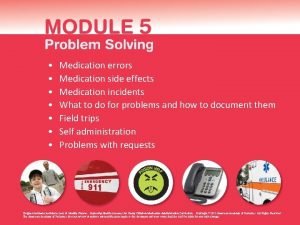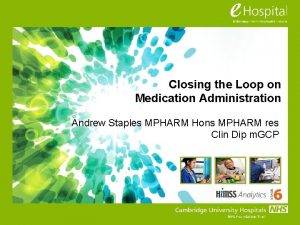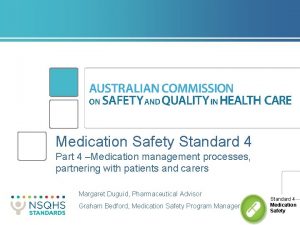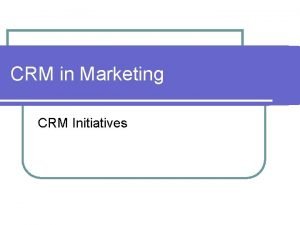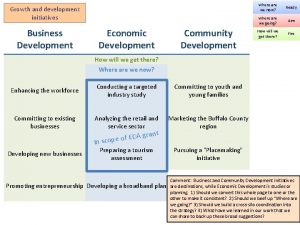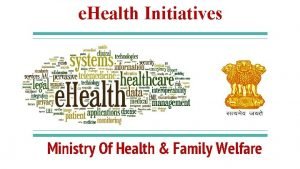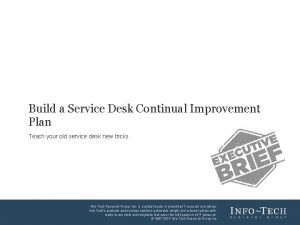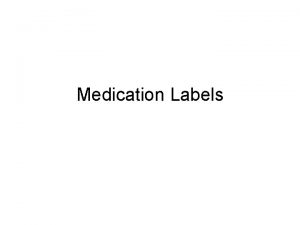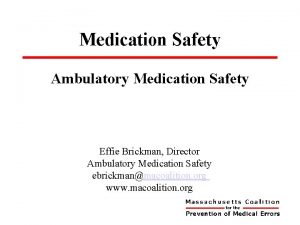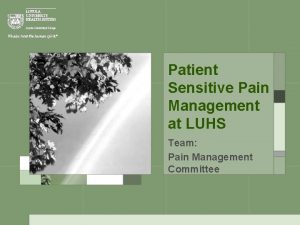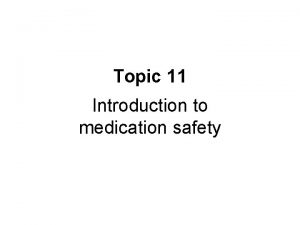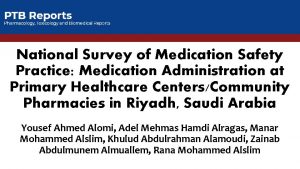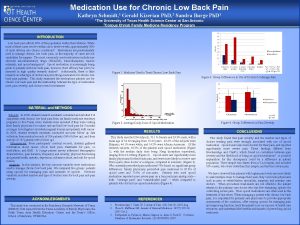Key Initiatives in Medication Safety at LUHS Kathryn













- Slides: 13

Key Initiatives in Medication Safety at LUHS Kathryn R. Montanya, Pharm. D, MS Medication Safety Specialist

Opportunity Statement • Errors and patient harm associated with medication treatment is a major issue for all healthcare organizations. • Medication safety is a major part of Loyola’s overall patient safety plan. • Key activities underway at LUHS are summarized here.

Committee Structure for Medication Safety Medication Use Safety Improvement Committee (MUSIC) Pharmacy and Therapeutics Committee (P&T) As needed – also, quarterly report. Medical Care Evaluation and Analysis Committee (MCEAC) Event analyses. Other Committees As recommended by MUSIC members.

Medication Safety Targets and Tactics (from LUHS Patient Safety Plan FY 06) Target Meet JCAHO patient safety goals Implement selected practices from ISMP Consult Tactic Medication reconciliation Identify and prevent errors with look/sound alike medications Label meds on operative fields Reduce/eliminate buretrols Establish time frame for now, stat, and routine orders Analysis of at least one ADE per month Implement ADE analysis tool. Updated policies on: - High alert medications - Floor stock medication inventory Review/revise selected policies/procedures

Medication Reconciliation • Research indicates that a large fraction of medication errors occur during admission, transfer and discharge when new orders are written. • Medication reconciliation is a JCAHO National Patient Safety goal directed at preventing these errors. • The essence of reconciliation is making sure that there is a single list of medications on which the patient, family and caregivers agree.

Medication Reconciliation • JCAHO requirement: The patient’s home medication list must be: – Accurately recorded with the involvement of pt. – Reconciled with any new orders that are written – Communicated to the next provider on transfer or discharge • A physician-led process has been designed, which is based in the Epic Medical Record • Currently pilots are underway - full implementation will coincide with physician documentation in EMR

Preventing errors with look-alike/sound-alike (LASA) medications • Many errors are due to the fact that numerous medications have names that look and/or sound alike (for example: vincristine and vinblastine). • JCAHO requires that we identify a list of name pairs and implement safe practices to prevent errors. • The LUHS high-alert medication policy identifies our current LASA list, and current action to prevent errors includes: • Tallman lettering on pharmacy labels and computer screens. (i. e. vin. CRIStine, vin. BLAStine) • Storage separation in pharmacy and on nursing units

Reduce or eliminate the use of buretrols

Reduce or eliminate the use of buretrols • A buretrol is a plastic cylinder used for many years to regulate the flow of intravenous fluid or medication. • Buretrol use increases the risk of medication being infused without being properly prepared and labeled in the pharmacy. • In addition, modern intravenous infusion pumps make buretrols obsolete. • Therefore, over the next 6 -12 months buretrols use will be eliminated from LUHS except in those very few areas where buretrol use is known to improve the safety of medication delivery.

Establish standard turnaround times for medication orders • Delayed medication doses are by far the most commonly reported adverse medication event. One facet of the problem is misunderstanding among healthcare practitioners about what is an appropriate turnaround time. • In order to establish a standard and promote realistic expectations on the part of caregivers as to when a medication may be anticipated to be delivered to the patient care area from the pharmacy, standard turnaround times have been established for NOW, STAT and routine orders. • The draft policy is under review.

Adverse Drug Event Analysis • The goal of analysis is to identify what the underlying cause of the problem was and develop solutions to prevent future incidents. • Trends in medication adverse event data are also reviewed regularly to identify opportunities for improvement. • For example, recently a number of errors were made involving two commonly used opiates medications, morphine and hydromorphone. • To improve safety, the number of different medication strengths available to nursing (floor stock) will be reduced to the minimum needed.

Medication event reported by caregiver via Patient/Visitor Safety and Quality Report Event reviewed by medication safety specialist Was the patient harmed? YES NO Could the patient have been harmed? YES Medication event analysis NO Is the event likely to be repeated frequently? NO Event entered into database YES

High-Alert Medications • High-alert medications are those that are more likely to be associated with harmful adverse effects – e. g. chemotherapy drugs, insulin, and anticoagulants like heparin • JCAHO states that hospitals must identify a list of high-alert medications and implement special safe practices with those medications to prevent errors, – e. g. have two nurses independently check the dose of the medication before it is given • The LUHS high-alert medication policy is currently undergoing a thorough revision. An expanded list of high alert medications is being identified with specific safe practices to reduce the chance of an adverse medication reaction.
 Luhs library
Luhs library Medication safety module
Medication safety module Closed loop medication administration safety initiative
Closed loop medication administration safety initiative Standard 4 medication safety
Standard 4 medication safety Refusal of medication 12 key points
Refusal of medication 12 key points Delvic sanitation initiatives
Delvic sanitation initiatives Digital initiatives in higher education
Digital initiatives in higher education Crm initiatives
Crm initiatives Johannes volkelt empathy theory advantages
Johannes volkelt empathy theory advantages Business development initiatives
Business development initiatives People's initiatives
People's initiatives Nasa access management system (nams)
Nasa access management system (nams) Health initiatives
Health initiatives Service improvement plan for service desk
Service improvement plan for service desk

